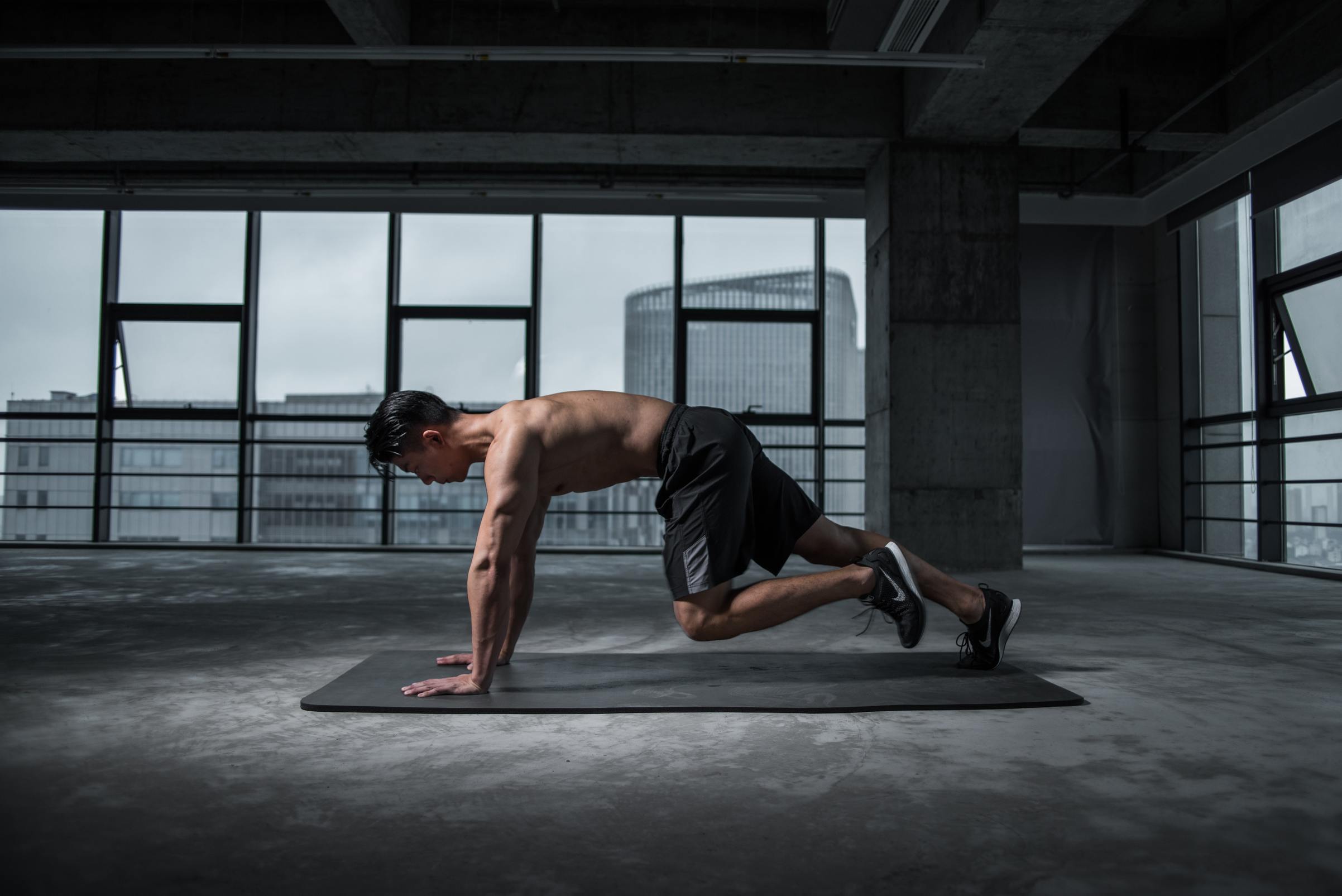There are many exercises for knee ligament tear. A knee ligament tear or knee sprain is an injury of the ligaments, tough bands of fibrous tissue that connect the bone to bone and bone to cartilage. Bones of the upper and lower leg at the knee joint. A ligament tear usually occurs due to extreme force to a joint like a fall or another high-impact event. Common ligament tears are to the neck, wrist, thumb, knee, ankle, or back ligaments. But here we will learn about the exercise for knee ligament tear.
Major Knee Ligaments
The knee joint contains four major ligaments. Those are-
- Anterior cruciate ligament (ACL): The anterior cruciate ligament or ‘ACL’ may be a ligament inside the knee that gives stability to the knee. An anterior cruciate ligament injury occurs if this ligament may be a torn. The anterior cruciate ligament (ACL) typically sprains during one of the following knee movements:
- Sudden stop
- A twist, pivot, or change in direction at the joint
- Extreme over straightening (hyperextension); or
- A direct impact to the outside of the knee or lower leg.
These injuries are seen among athletes in soccer, football, basketball, rugby, wrestling, skiing, and gymnastics.
- Posterior cruciate ligament (PCL): The posterior cruciate ligament (PCL) may be a strong and enormous ligament located deep within the knee. It arises from the rock bottom of the femur (thigh bone) and travels downwards and backward to the tibia (shin bone). It also stabilizes the knee with an anterior cruciate ligament (ACL). The posterior cruciate ligament (PCL) prevents the tibia from moving too far behind the femur and preventing excessive straightening and twisting movements of the knee joint. It most frequently sprains due to a direct impact to the front of the knee, like hitting the knee on the dashboard during a car crash or landing hard on a bent knee during sports. In athletes, posterior cruciate ligament (PCL) injuries are commonest among those that play soccer, football, rugby, and basketball.
- Medial collateral ligament (MCL): The medial collateral ligament (MCL) is a tough band of tissue that gives support along the within of the knee joint. Just like the anterior cruciate ligament (ACL), the Medial collateral ligament (MCL) is often torn by an immediate sideways blow to the surface of the knee or lower leg, the type of blow that will happen in soccer, football, rugby, and hockey.
- Lateral collateral ligament (LCL): The lateral collateral ligament (LCL) is also a tough band of tissue that’s gives support along the outside of the knee joint like the Medial collateral ligament (MCL). The change of sprain of this ligament is very low because most lateral collateral ligament (LCL) injuries are caused by a blow to the inside of the knee, and that area usually is shielded by the opposite leg.
| Related Articles How long does it take for a torn ligament in your knee to heal? |
Grades of Knee ligament Injuries
There are three grades of injury called Grade 1, Grade 2, and Grade 3.
- The Grade 1 injury suggests as a mild injury. This injury stretches the ligament, which causes microscopic tears within the ligament. These tiny tears don’t significantly affect the general ability of the knee to support your weight.
In Grade 1 –
- Pain may feel during knee joint movement
- No loss of Range of motion (ROM)
- Minimal to No swelling
Recovery Time: Normally for full recovery, it may take 3-6 weeks.
- The Grade 2 Injury suggests as a Moderate injury. The ligament is partially torn, and there’s some mild to moderate instability of the knee while standing or walking.
In grade 2–
- Mild to moderate pain during movement
- Mild to Moderate swelling
- Severe loss of function
Recovery Time: It may take 4-8 weeks for a full recovery.
- The Grade 3 injury suggests as a Sever injury. The ligament is torn completely or separated at its end from the bone, and therefore the knee is more unstable. These sprains may require surgical repair especially if they involve the ACL (Anterior Cruciate Ligament).
In grade 3–
- Severe Pain
- Large amount of swelling
- Sever loss of function
Recovery Time: More than 8 weeks.
Exercise for knee ligament tear
If you think you’ve got a knee ligament injury/tear, apply ice or compression with a bandage or brace immediately. Elevate the leg. Take Rest and over-the-counter pain relievers are also in order.
Physiotherapy is an effective treatment for knee ligament injury or injury. After visiting and providing the history of your problem to your physical therapist he/she may provide various kinds of exercise.
Based on your problem and severity the physical therapist will give you an Exercise for knee ligament tear that will help you to repair the ligament damage, restore normal movement and functioning of the knee, increase your range of motion (ROM), and eliminate any amount of stiffness and pain, gradually.
But To overcome the matter of your torn ligament in your knee, here we are providing a few physiotherapy-based Exercises for knee ligament tear that you simply can perform easily at home. These exercises are best when performed regularly, 3-4 times each day and briefly intervals of few times every hour instead of once each day for an extended period.
- Static Quads-
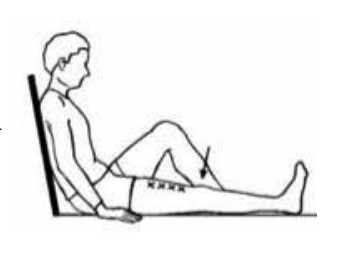
- 1st– Sit on the floor
- 2nd– Straight leg in front of you
- 3rd– Push the back of your knee- down into the floor
- 4th– Keep your toes pulled up- towards your head
- 5th– Hold for 5 seconds
- 6th– Relax
2. Straight leg raise-
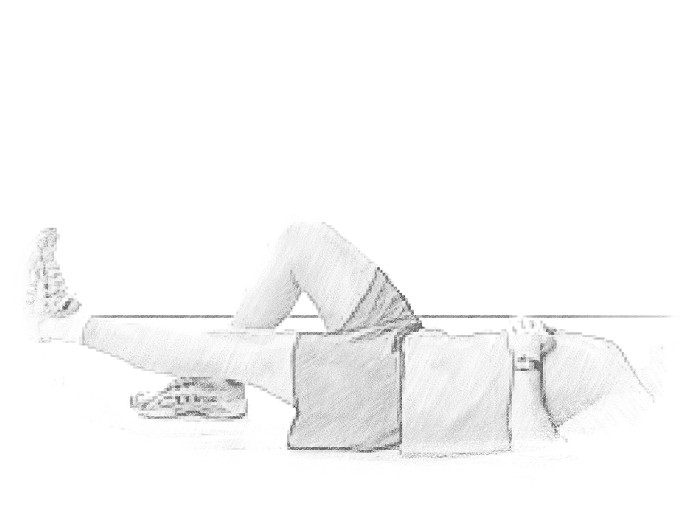
- 1st– Lie on back
- 2nd– Straight the leg in front you
- 3rd– Thigh muscle tightened of an injured leg
- 4th- Lift about 8 inches from the ground
- 6th- Repeat 3 sets ten times
3. Knee range of movement-
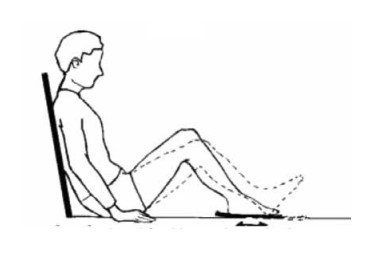
- 1st– Sit and lounge
- 2nd– Bend your knee
- 3rd– Try to straightening as much as possible
- 4th– Repeat 5 times a day
4. Bridge-
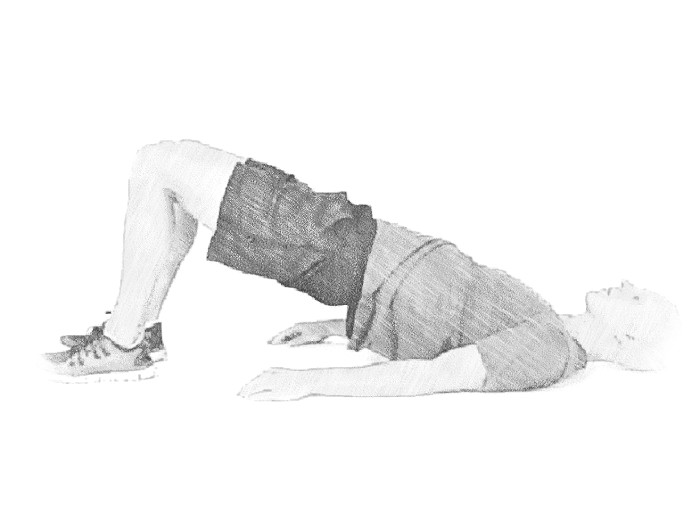
- 1st– Lie in the supine position
- 2nd- Bend both knees
- 3rd– Extend both hands along the body
- 4th– Palms face down
- 5th– Lift your pelvis off the ground
- 6th– Puff the chest toward your chin
- 7th– Rolling the thighs inward and downward
- 8th– Hold for 10 seconds
- 9th- Repeat 1 set 10 times
5. Wall squats with ball-

- 1st– Stand together with your back facing a wall. Place your feet a few shoulder-width apart
- 2nd– Place the therapy ball between your back and therefore the wall, and move your feet call at front of you in order that they are about 30 centimeters ahead of your hips
- 3rd– Keep your arms at your sides, or put your hands on your hips
- 4th– Slowly squat down as if you’re getting to sit during a chair, rolling your back over the ball as you squat. The ball should move with you yet stay squeezed into the wall
- 5th– Be sure that your knees don’t enter front of your toes as you squat
- 6th– Hold for six seconds
- 7th– Slowly rise to your standing position
- 8th– Repeat 8 to 12 times in a day
6. Moving warrior-

- 1st– Stand along with your legs at one leg’s distance separated.
- 2nd– Pivot your right foot bent 90 degrees
- 3rd– Line your right heel up along with your left arch.
- 4th– Keeping your chest and hips open, lift your arms to shoulder height.
- 5th– Bend your right knee all together that it stacks over your ankle and keep it following between your third and fourth toes
- 6th– Must Hold for ten seconds
- 7th– Straighten your leg
- 8th– Do ten reps and complete two sets prior to exchanging sides
Precautions before exercise
Physiotherapy is incredibly important for these injuries to make a sure proper and complete recovery. Though each injury will differ slightly, physiotherapists can aid in ensuring that there’s an accurate process of healing and to figure on a program that will allow you to execute full recovery goals in a timely manner to urge you back to health as soon as possible.
But any stretches for knee ligament injuries and any weight-bearing or impact-bearing exercises should be first reviewed by your doctor or physiotherapist. Healing happens gradually, and every phase/grade of your recovery introduces a replacement set of exercises.
Your doctor or physiotherapist can determine when you’re able to add more range-of-motion, flexion, and weight-bearing movements. Everyone’s recovery progresses at a special rate, counting on age, nature of the injury, and overall health.
Rushing healing is often problematic as you’ll set yourself up for complications and setbacks. Even once you start to feel better, your full strength, proprioception, and range of motion might not be fully restored. As a result, you’re in danger of reinjuring.
Reference

